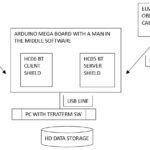The 1995 Ford Thunderbird does not use the OBD2 (On-Board Diagnostics II) standard. This model year falls under the OBD1 (On-Board Diagnostics I) system, which was used in most vehicles prior to 1996. While both systems are designed for diagnosing engine problems, they differ significantly in terms of connector type, communication protocols, and diagnostic capabilities. This article clarifies the difference and offers guidance on troubleshooting a 1995 Thunderbird’s ignition system.
Understanding the Difference: OBD1 vs. OBD2
OBD2 became mandatory for all vehicles sold in the United States beginning in the 1996 model year. This standardized system simplified diagnostics with a universal connector and standardized diagnostic trouble codes (DTCs). OBD1, on the other hand, utilized various connectors and proprietary codes specific to each manufacturer.
The visual difference between an OBD1 and OBD2 connector is readily apparent. The OBD2 connector is typically a 16-pin trapezoidal connector located under the dashboard, while OBD1 connectors vary in shape, size, and location depending on the manufacturer.
Troubleshooting a 1995 Thunderbird Ignition System
The original question pertained to testing the ICM/TFI (Ignition Control Module/Thick Film Ignition) and PIP (Profile Ignition Pickup, also known as the Hall Effect sensor) on a 1995 Thunderbird. Difficulties arose due to discrepancies between the available wiring diagrams and the actual component. Specifically, the Thunderbird’s ICM/TFI lacked the three-pin connector (GND, PIP PWR, PIP IN) shown in some diagrams.
While the referenced resource (http://www.therangerstation.com/tech_library/TFI_Diagnostic.html) offers valuable testing procedures for Ford EEC-IV/TFI-IV systems, adapting these procedures to the specific configuration of the 1995 Thunderbird is necessary. Using a multimeter or test light requires careful identification of the correct wiring based on the vehicle’s specific wiring diagram.
For instance, clarifying the meaning of “distributor base” in the context of “attach negative (-) VOM lead to distributor base” is crucial. It likely refers to the metal housing of the distributor, providing a ground connection.
Similarly, performing tests without a dedicated TFI tester requires understanding how to use a multimeter to check for voltage, continuity, and resistance at the appropriate terminals. Accurately interpreting the results, particularly concerning spark occurrence in System Test #7, depends on careful execution of the preceding steps.
Conclusion
The 1995 Ford Thunderbird uses the OBD1 system, not OBD2. Diagnosing issues with this system requires utilizing resources specific to the vehicle and understanding how to adapt general testing procedures. Accurate interpretation of wiring diagrams and careful measurement with a multimeter are essential for successful troubleshooting. Consult a 1995 Thunderbird repair manual for precise wiring diagrams and testing procedures relevant to this specific model.

